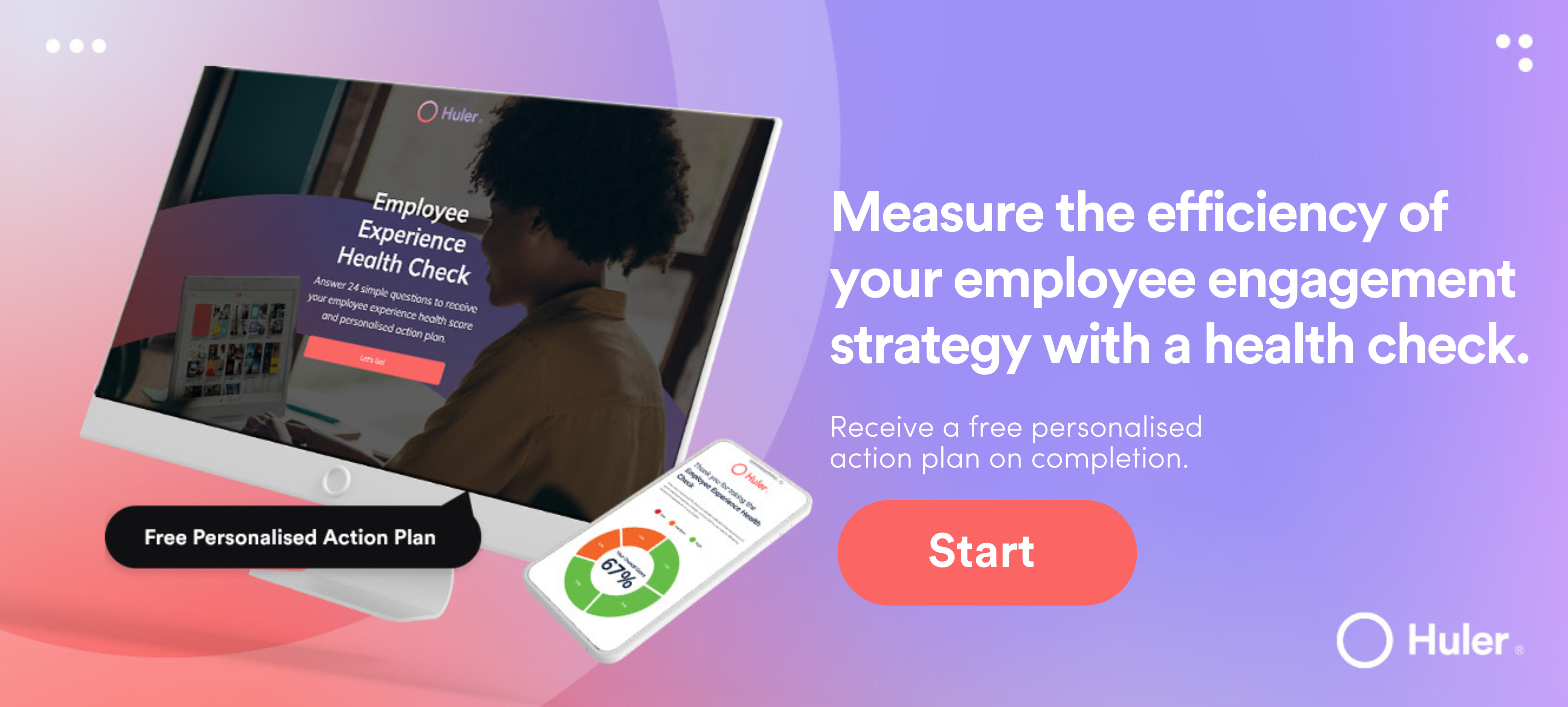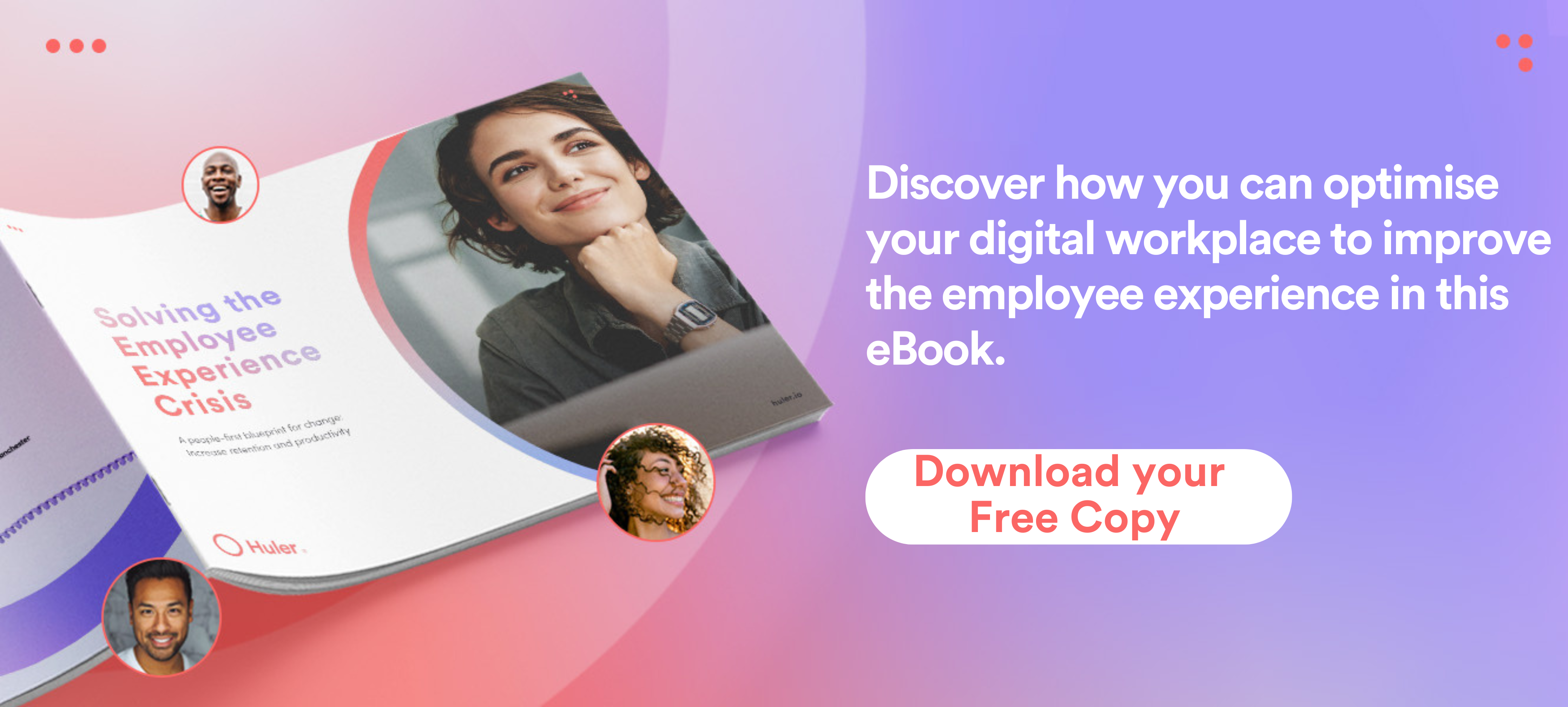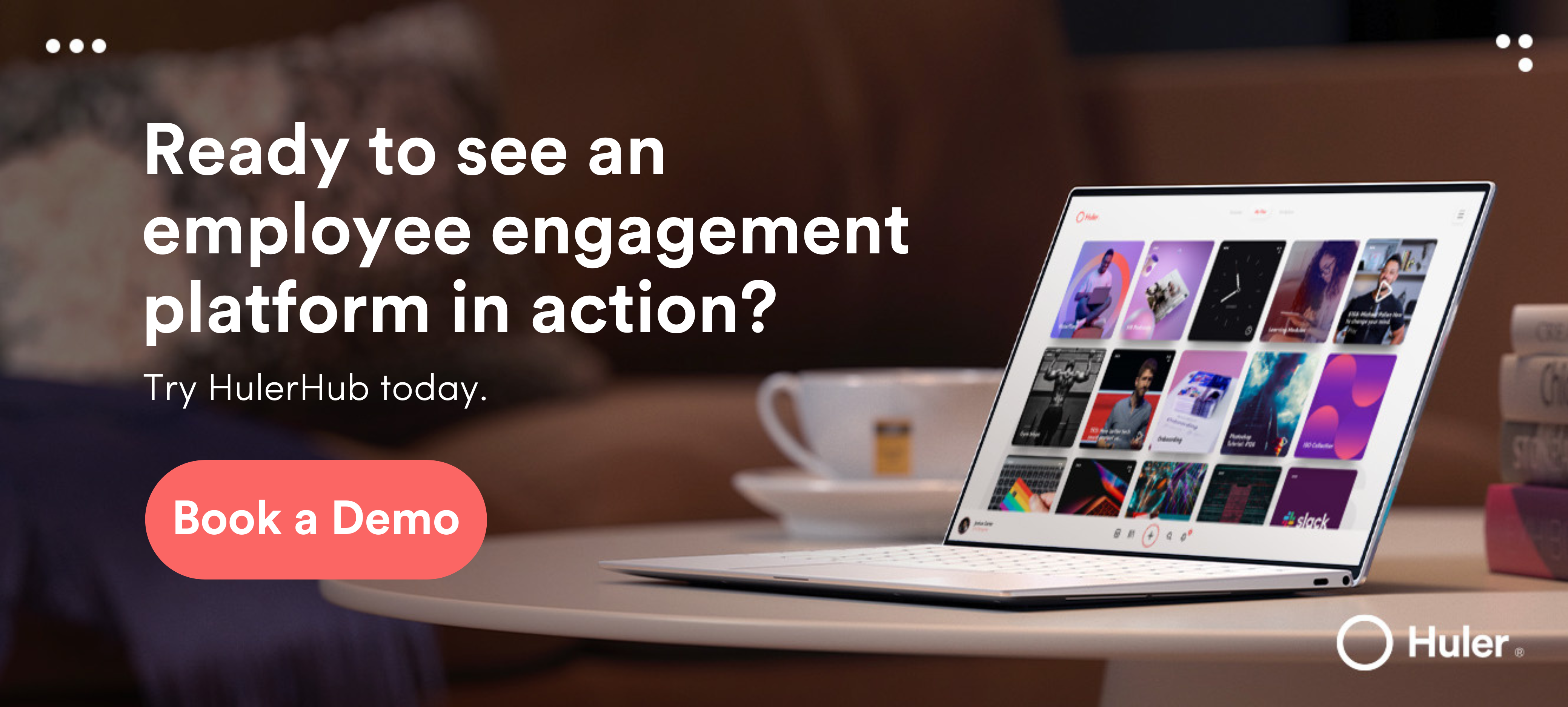Employee engagement might be hard to establish within your company, but it’s a fairly easy concept to understand. Simply put, employees who have a positive attitude toward your organisation and its values are more enthusiastic about their work — and the results show.
- Engaged teams are up to 21% more profitable.¹
- Companies with engaged employees are, on average, 17% more productive.²
- High engagement reduces absenteeism by 41% and turnover by 59%.³
- Increased engagement is correlated with better customer relationships.⁴
Engaged employees have greater job satisfaction,⁵ are less likely to leave, and get more done. So, how do you increase employee engagement? There are a number of contributing factors, including:
- Internal promotions and learning and development opportunities
- Regular, transparent communication
- Co-worker and management relationships
- Benefits and pay
- Work/life balance
- Work environment
Fundamentally, employee engagement is directly influenced by all of the ways in which employees experience work. In order to improve engagement, you need to create the right work environment and empower people to work effectively and efficiently. You also need to consider what you want to measure and how you want to gauge engagement — which is an inherently vague concept.
Technology has always played a role in employee experience and engagement, but remote and hybrid working has raised the stakes. More than ever, your “workplace” and “digital workplace” are one and the same thing. Curating the right digital environment and experience is a central part of an effective employee engagement strategy — not to mention the fact that technology can directly help you manage and grow engagement. That’s why we’ve put together a list of powerful tools that can help you transform employee engagement and experience in 2022 and beyond.
How we identified the best tools
There are hundreds, if not thousands, of software solutions that can help you improve your organisation’s employee engagement. Here, we wanted to look at tools that can either help you create an engaging work environment or help you track and improve engagement.
In both instances, we’ve focused on tools that:
- Are easy and simple to use
- Improve communication
- Enable clear goal-setting
- Focus on productivity
- Making work feel less like hard work where possible
Not every tool on this list will be right for you. However, it will help you think about the types of outcomes you can create, and how technology plays a role. Let’s get started.
Suggested reading: For more tips on how to boost your employee engagement , check out our new eBook — Solving the Employee Experience Crisis.

Tools that create an engaging workplace
These tools will help you build a digital workplace environment able to engage employees and create better employee experiences.
Huler
Huler’s HulerHub is an employee experience platform built to transform how you work. Using customisable, detailed and visually engaging tiles, HulerHub creates a unique and seamless portal to all of the cloud-based applications, systems, resources, and communication channels you need to get the job done. This includes:
- Customised dashboards: Both users and administrators can create unique digital environments, putting your most used resources at your fingertips, and grouping important (but less used resources) just a click away.
- Dynamic search: Smart search features let you look for resources using keywords, allowing you to find something, even if you aren’t sure where it is.
- Notifications: The Huler Notification Centre allows you to view updates at a glance, grouping updates by type to allow you to see what’s changing in real-time.
- Insights: Understand who is using what and why, and then make better decisions about other technology choices and improve employee experience even further.
- Communication: Share links to multiple files, resources and content with internal and external audiences using Collections. Improve knowledge sharing, simplify communication and onboarding.
- Community: Enable individuals to recognise the hard work of colleagues and employees with gamification that encourages sharing of appreciation. 89% of human resources (HR) leaders believe that ongoing peer feedback is critical to engagement.⁶ HulerHub integrates this capability with the Kudos dashboard, which then collates all this feedback over time — improving tracking of engagement and encouraging participation.
How it improves engagement: HulerHub improves engagement by optimising the employee experience. It was built to close the gap between remote, hybrid and in-office employees, delivering the same, high-quality digital workplace to all of them.
HulerHub brings the simplicity and sophistication of consumer-grade technology to the workplace, replacing traditional intranets with a cloud-ready solution that is as flexible as it is good looking. Rather than being forced to wade through confusing files and endless email threads, employees are able to jump straight to what they want and just get to work. That’s how you drive engagement.
Superhuman
Superhuman is an email management tool that helps you keep your emails organised with keyboard shortcuts and a “get things done” methodology. Although Superhuman is a very specialised and specific tool, it drastically improves the way you experience a fundamental part of work — emails.
The software offers a split inbox feature that enables you to automatically sort incoming emails into different inboxes, so you can unclog your main inbox from newsletters, notifications, and other emails that may waste your time. This tool also prompts you to follow up on messages, schedule emails, and makes it easier to move toward “Inbox Zero”.
How it improves engagement: Superhuman made our list because it’s easy to use, increases productivity, and streamlines communications. Like HulerHub, it makes work easier, reducing admin tasks and allowing people to focus on outcomes. This creates a more engaging and productive environment that is optimised for success.
Slack
Slack is a popular cloud-based team communication tool designed to help with project collaboration. The real-time messaging app offers a wide variety of integrations and allows you to split your internal communications into various channels, making it easier to follow them.
This software is super versatile. You can send files, set up meetings, set up bots to help your team synchronise their calendars and send automatic reminders, and more — optimising your exact workflows.
How it improves engagement: Slack made our list because it brings simplicity to digital communications, becoming a central pillar of your digital workplace. Of course, there are other communication tools to choose from (e.g. MS Teams), but we like Slack because of its intuitive interface and focus on channel-based communication.
Using Slack, you are able to collaborate within channels, while minimising notifications. However, by keeping everything in one place, it’s easy for someone to jump in and get the context they need. This helps mirror the flow of in-person communication, but online.
Asana
Asana is one of the most popular project management and work management tools out there. The software helps project managers come up with long-term strategies and execute them according to plan.
Asana makes it easier to collaborate, share files, keep track of tasks, and more. Thanks to its clean layout and simple navigation, Asana is easy to use, even for those who are not tech-savvy.
How it improves engagement: Asana simplifies team communication, and boosts your team’s productivity. Both of these factors create a better environment, and improve engagement. However, a good project management tool is also able to help individuals see how their tasks impact end outcomes. A sense of purpose at work is linked directly to engagement, and understanding the importance of your tasks can help do just that.⁷
Like with Slack, there are many different project management tools you might want to try (e.g. Trello, Jira, ClickUp and more). Asana made our list because it’s user-friendly and has a lot of sophisticated options — making it a great choice for a wide range of businesses.
Vispa
Vispa is an up-and-coming project management and collaboration solution that helps improve your team’s productivity with gamification features. There are some features of Vispa that overlap with more traditional project management tools like Asana. However, it also offers more. For example, after setting up custom projects, you are able to create 3D virtual workspaces for each project, where your team’s avatars can communicate, brainstorm, take notes, and more.
How it improves engagement: Vispa brings the same benefits to planning, communication and collaboration that traditional project management tools deliver. It then builds on that with visualisations that provide a unique and engaging environment, literally simulating the digital workplace.
Long-term, this kind of “meta-verse” style tool has the potential to transform digital communication. Right now, we might not recommend something like this as a full replacement for traditional project management, but it’s definitely something worth checking out.
Miro
Miro is a cloud-based collaboration tool specially designed to help small and medium-sized businesses with a distributed workforce to thrive. The software acts as an open-ended canvas, enabling you to share your ideas and make them easier to understand with sticky notes, emojis, icons, charts, drawings, and more.
How it improves engagement: Miro helps you organise your ideas, brainstorm with your team, create mockups, review project files, and more. The tool integrates with a lot of apps, so you can include it into your current workflow with ease.
Miro made our list because it helps with communication and productivity, creating a collaborative digital environment that enables employees to engage with ease. It offers the kind of flexibility that users need to merge both digital and in-office collaboration within a simple interface people will like to use.
QuizBreaker
QuizBreaker is collaboration software designed to boost team engagement and morale. The solution enables you to invite your team to a virtual happy hour where they answer different sets of questions. You can use question templates or you can ask your own and then have your teammates guess who answered what.
How it improves engagement: This tool helps you create a fun company culture, making it easy for your team members to discover shared interests and keep the conversation rolling. Positive relationships with colleagues is critical to engagement, and QuizBreaker helps you foster those relationships within a hybrid context. We like QuizBreaker, specifically, because it’s easy to use and is dedicated to making work fun.
Tools dedicated to improving engagement
These tools help you track and grow engagement directly, keeping on top of how your other digital efforts are doing.
Pro tip: Although we’ve included HulerHub on our list of tools able to create an engaging environment, its dedication to employee experience arguably put it on this list as well. If you missed it, go back and check out how Huler changes the way in which all of your tools work together.

Culture Amp
Culture Amp is an employee feedback platform. It allows you to create and administer custom employee feedback programmes, and compare results against top companies in the industry. This can be done using templated questionnaires, as well as create custom forms deliverable to specific teams or your entire workforce. You can better understand your employees and then take steps to improve engagement.
How it improves engagement: Employees who “feel that their voice is heard” are 4.6x more likely to be engaged and perform at their best.⁸ Culture Amp helps you do just that by streamlining the process of getting feedback and taking actions. It’s then up to you to take actions that actually empower employees and drive engagement.
Perkbox
Perkbox is an employee benefit and rewards application. It allows you to provide discounts and incentives to employees through a single-sign-on platform that unites your entire employee rewards programme. You can select from standard options, provide discounts to your entire team, or create unique incentive-based rewards for hitting critical goals. It even includes a Celebration Hub where you can recognise good work and make company-wide announcements.
How it improves engagement: Everyone is motivated by feeling recognised. Providing tangible rewards to employees will make them feel valued, and setting up incentives will drive productivity. Fundamentally, Perkbox is about letting your employees know that you care, and that is a critical part of building an engaged workforce and positive culture. What’s more, this is done in a fun and dynamic way that removes distance and makes remote employees feel like part of the team.
The importance of employee experience to employee engagement
Fundamentally, positive employee experiences create employee engagement. We spend a huge part of our waking hours at work, why shouldn’t it be a pleasant experience? And if you’re happy at work, you’re likely an engaged employee.
In the era of remote and hybrid working, the workplace and digital workplace are one and the same thing. What’s needed is the ability to seamlessly integrate the many components of your digital workplace (and employee engagement tools) within a single and streamlined platform. Without this, it’s impossible to standardise experiences and simplify workflows.
This is why we created HulerHub: to deliver the employee experience outcomes needed to foster positive engagement using digital tools — improving the ROI of all your investments, and closing the gap between remote, hybrid and in-office employees.
But don’t take our word for it. Book a free demo with HulerHub and see how it will transform employee engagement today!
1. 10 Timely Statistics About The Connection Between Employee Engagement And Wellness
2. 12 Employee Engagement Statistics You Need To Know In 2022
3. 12 Employee Engagement Statistics You Need To Know In 2022
4. Employee Engagement, Customer Satisfaction and Profitability
5. Relationship between Employee Engagement, Job Satisfaction and Potential Turnover
6. 10 Timely Statistics About The Connection Between Employee Engagement And Wellness
7. Help your employees find purpose—or watch them leave | McKinsey
8. 10 Timely Statistics About The Connection Between Employee Engagement And Wellness






